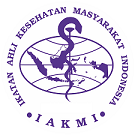Causes and Features of Childhood Trauma in COVID-19 Period
Abstract
Background: In this study, we aimed to reveal the characteristics and severities of child traumas under the Covid-19 pandemic and lockdown according to trauma mechanisms, locations and age distributions, and to evaluate the results.
Subjects and Method: The data of 333 pediatric trauma patients who came to our hospital during the lockdown period were analyzed retrospectively. The frequency and ratio analysis of the data obtained by the purposeful sampling method was performed. Pediatric Trauma Score, Injury Severity Score and Pediatric Glasgow Coma Scale were calculated. Gender, age distribution, trauma locations and trauma mechanisms were recorded, and distribution characteristics of the data according to trauma scores were compared. Continuous variables were analyzed using Student's t-test. Categorical variables were analyzed using the chi-square test. Statistical significance level was accepted as <0.05.
Results:193 of the patients (58.0%) were male. The mean age of the patients was 7.73 (Mean= 7.73; SD= 5.33). The most common trauma patients (49.8%) consisted of the school age patients. The number of patients who applied to our hospital from the urban was 244 (73.3%), and it was observed that the trauma occurred at homeside in 189 (56.8%) patients. The most common cause of trauma was falls. The mean Pediatric Trauma Score of the patients was 10.43 (Mean= 10.43; SD= 1.28), the Injury Severity Score was 2.24 (Mean= 2.24; SD= 4.45), the Pediatric Glasgow Coma Scale calculated was 14.95 (Mean= 14.95; SD= 0.66). It was observed that 99.7% of the study patients according to the Injury Severity Score and 93.7% according to the Pediatric Trauma Score were minor trauma.
Conclusion: Major childhood traumas and mortality decreased with the Covid 19 pandemic and lockdown.
Keywords: Childhood, Covid-19, Pediatric Trauma Score, Injury Severity Score, Pediatric Glascow Coma Scale
Correspondence:
How to Cite
References
Atik D, Cander B, Dikmeta? C, Bulut B, Sert E, Kaya H, G
Bulut M, Korkmaz A, Akkose S, Balci V, Ozguc H, Tokyay R (2002). Epidemiologic and clinical features of childhood falls, Ulus. Travma Derg, 8(4): 220
Cooper A, Barlow B, Davidson L, Relethford J, O
Copes WS, Champion HR, Sacco WJ, Lawnick MM, Keast SL, Bain LW (1988). The injury severity score revisited. J Trauma Inj Infect Crit Care, 28(1): 69
Esposito TJ, Sanddal ND, Dean JM, Hansen JD, Reynolds SA, Battan, K (1999). Analysis of preventable pediatric trauma deaths and inappropriate trauma care in Montana. J Trauma Inj Infect Crit Care, 47(2): 243
Gurses D, Buke SA, Baskan M, Herek O, KilicI (2002). Epidemiologic evaluation of trauma cases admitted to a pediatric emergency service epidemiologic evaluation of trauma cases admitted to a pediatric emergency service epidemiologic evaluation of
trauma cases admitted to a pediatric emergency service epidem, Ulus. Travma Derg, 8(3): 156
G
HallerJA (1983). Pediatric trauma: the no. 1 killer of children. J Am Med Assoc. 249(1): 47. doi: 10.1001/jama.1983.0-3330250027022.
Holmes JF, Palchak MJ, MacFarlane T, Kuppermann N (2005). Performance of the pediatric Glasgow Coma Scale in children with blunt head trauma
Keays G, Friedman D, Gagnon I (2020). Pediatric injuries in the time of covid-19.Healt. Promot. Chronic Dis. Prev. Canada, 40(11
K?l?
Korkmaz T, ErkolZ, Kahramansoy N (2014). Acil servise gelen pediatrik adli olgular?n de?erlendirilmesi: Retrospektif bir
MansuriF, Loux T, Brooks SE, Slye N, Lu Y, Lewis B, Chen H, et al. (2020). Temporal trends in patient characteristics, injury mechanisms and outcomes in pediatric trauma admissions between 2010 and 2017. Am J Surg. 220(2): 468-475. doi: 10.1016/j.amjsurg.20-19.11.041.
Nabian MH, Vosoughi F, Najafi F, Khabiri SS, Nafisi M, Veisi J, Rastgou V, et al (2020). Epidemiological pattern of pediatric trauma in COVID-19 outbreak: Data from a tertiary trauma center in Iran.Injury, 51(12): 2811-2815. doi: 10.1016/j.injury.2020.09.015.
Serinken M,
Tambay G, Satar S, Kozaci N, Acikalin A, AyMO, Gulen M, Acehan S (2013). Retrospective analysis of pediatric trauma cases admitted to the emergency medicine department. J Acad Emerg Med. 12(1): 8
Tepas JJ, Mollitt DL, Talbert JL, Bryant M (1987). The pediatric trauma score as a predictor of injury severity in the injured child. J Pediatr Surg. 22(1): 14
Tracy ET, Englum BR, Barbas AS, Foley C, Rice HE, Shapiro ML (2013).Pediatric injury patterns by year of age. J Pediatr Surg. 1384
World Health Organization (2014). Injuries and violence: the facts 2014. World Heal. Organ. Available at: https://apps.who.int/iris/handle/10665/149-798.
Yousefzadeh-Chabok S, Kazemnejad-Leili E, Kouchakinejad-Eramsadati L, Hosseinpour M, Ranjbar F, Malekpouri R, Mohtasham-Amiri Z (2016). Travma ge










